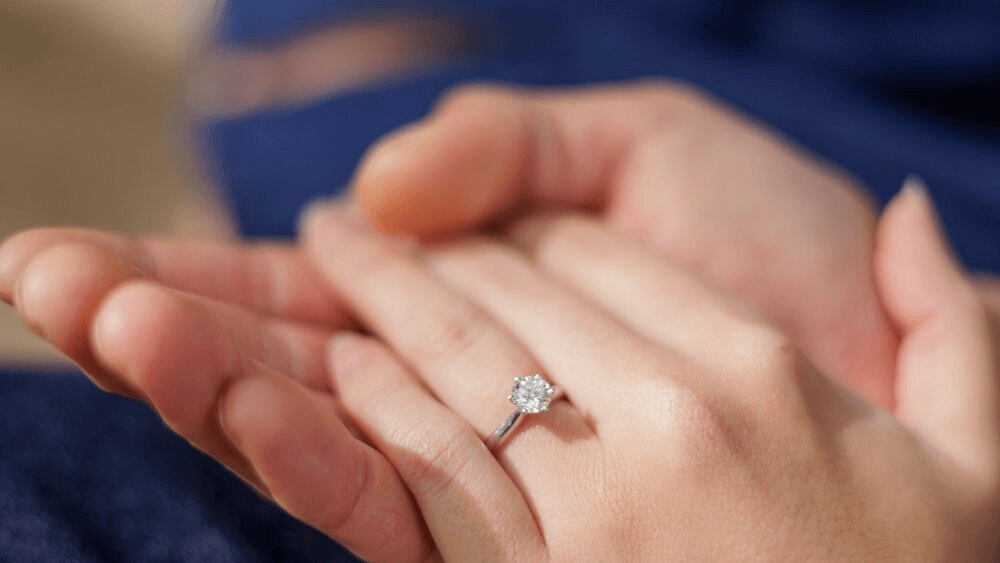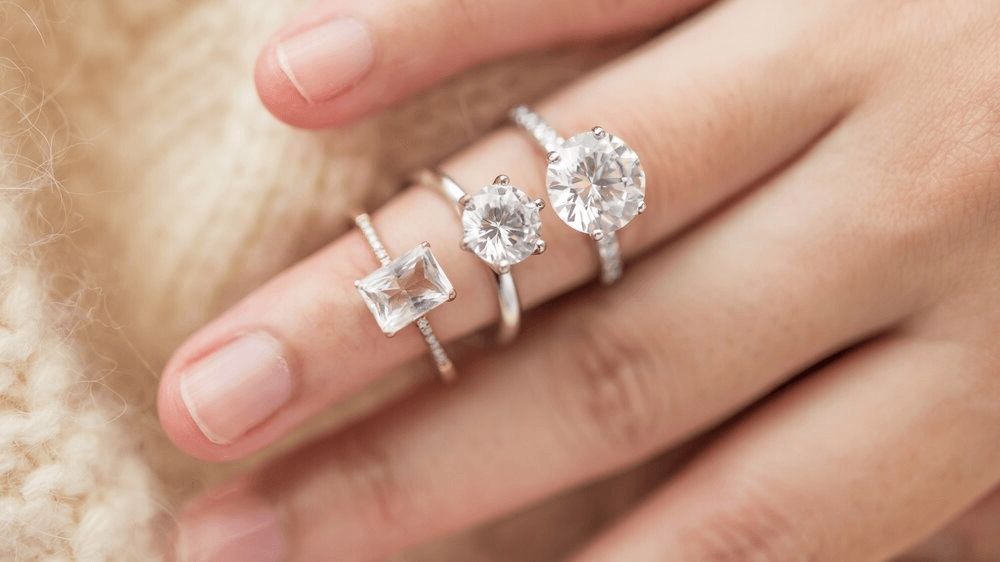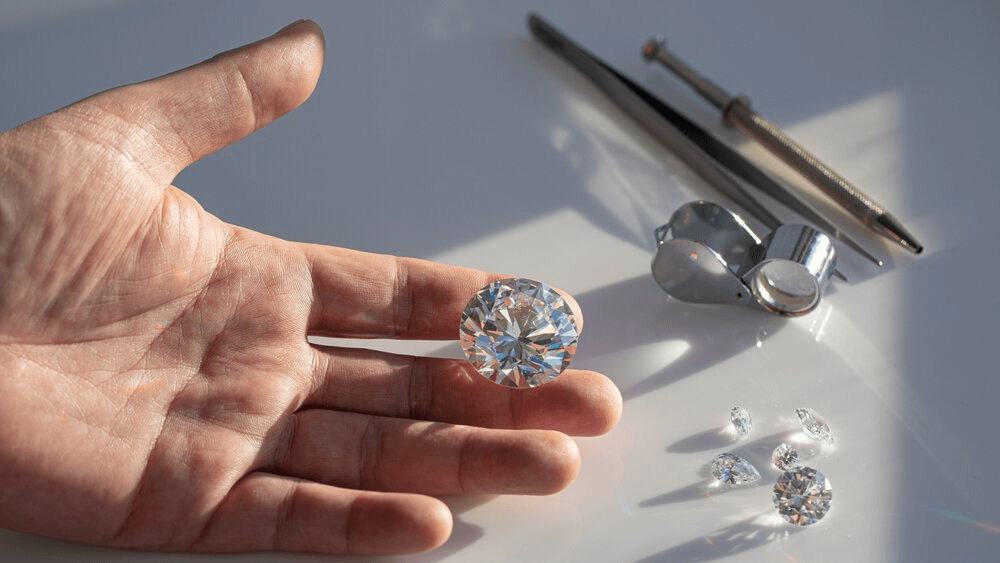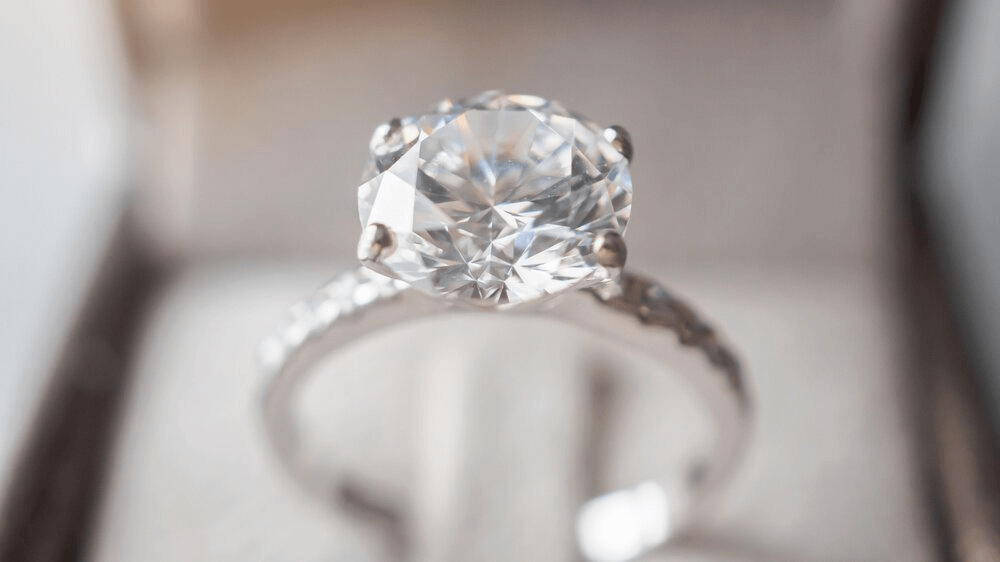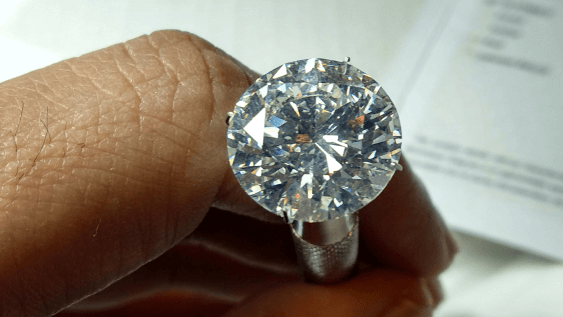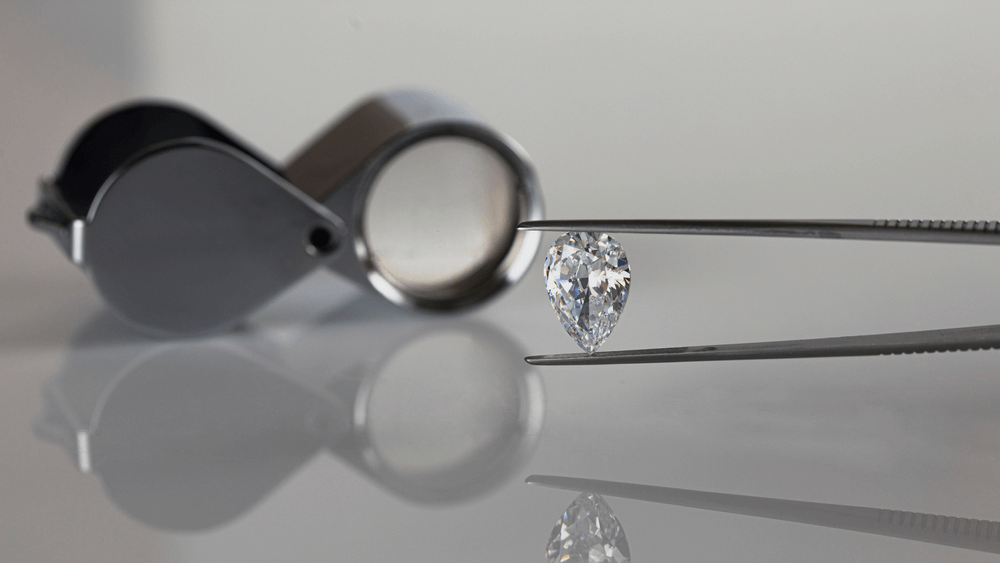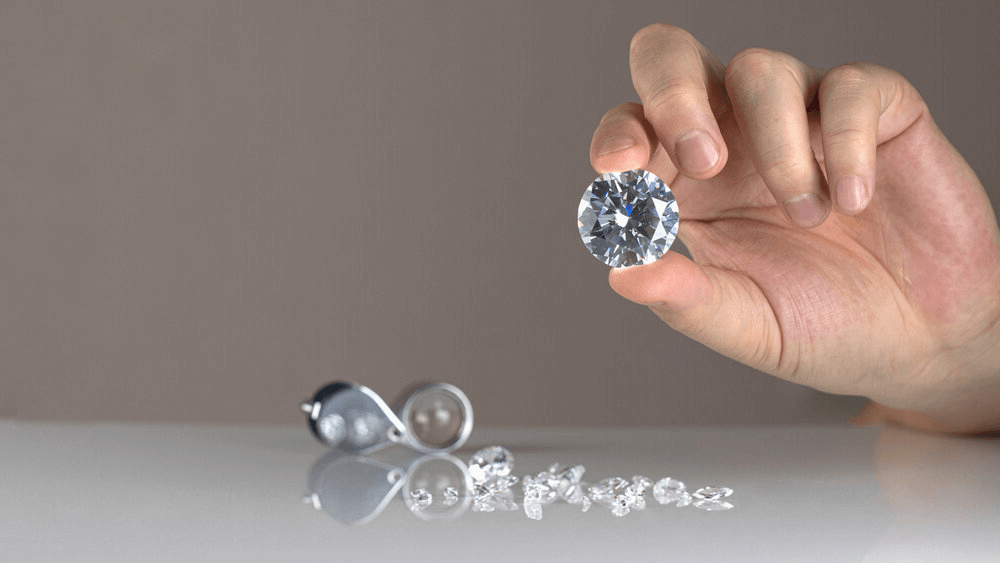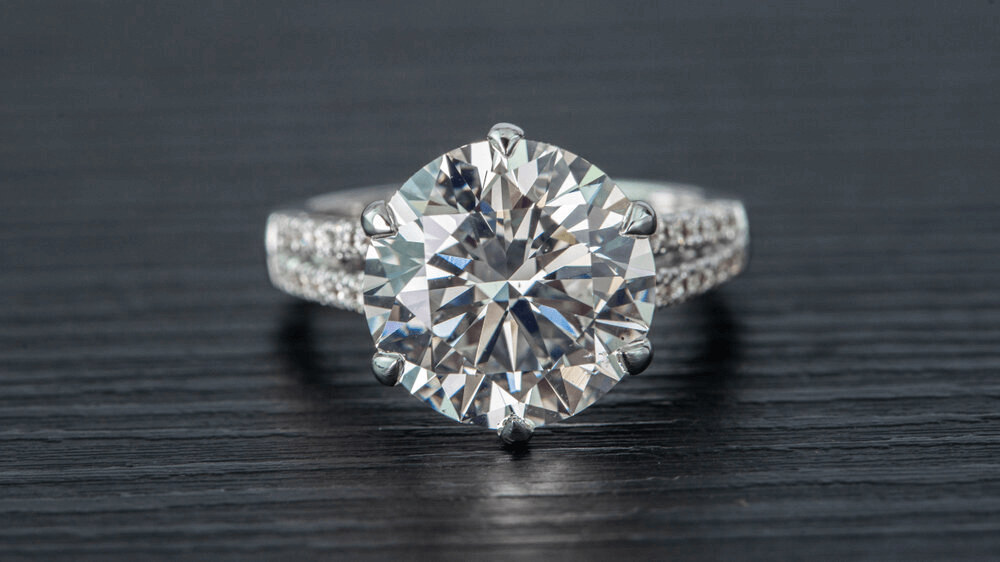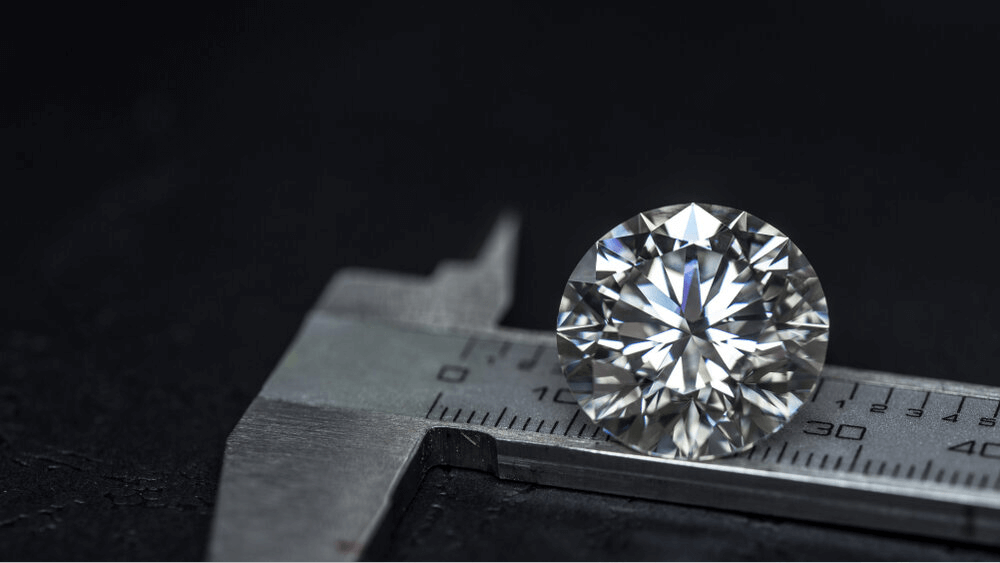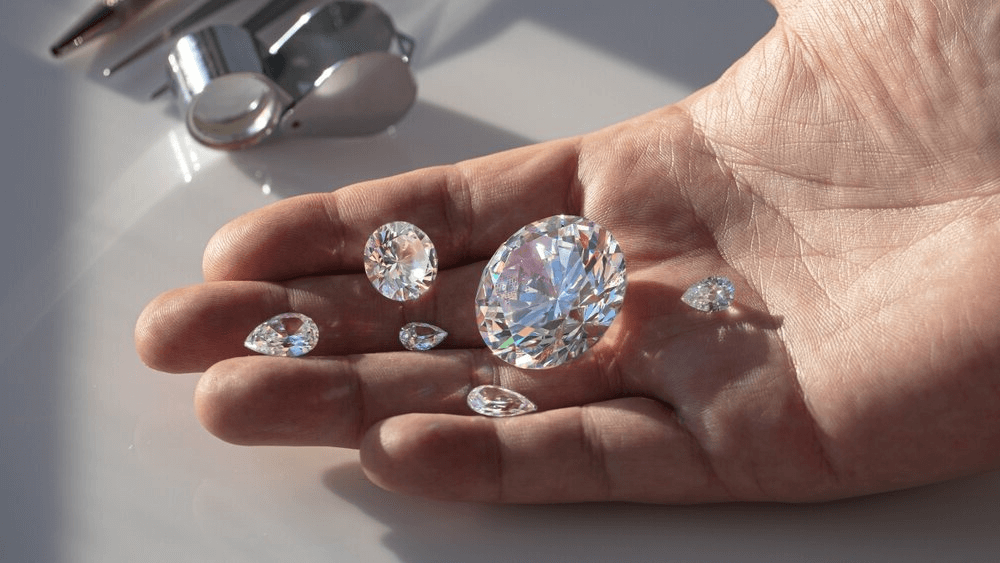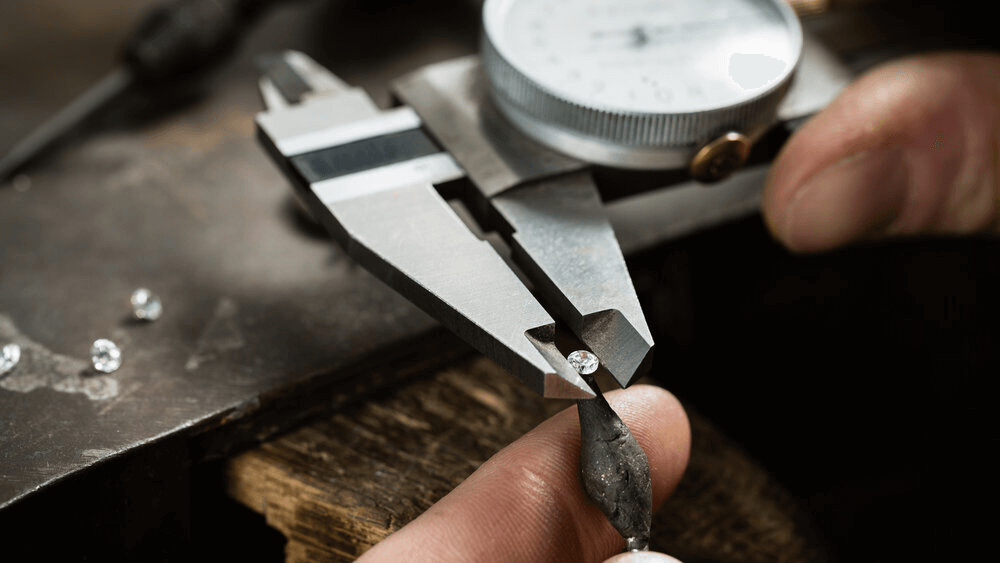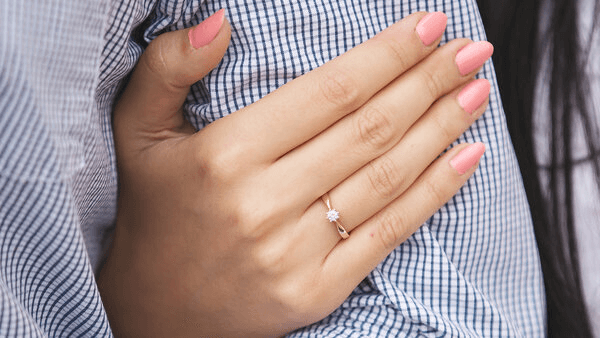Average Carat Size for Rings: What’s the Ideal?

By Gary A.

Edited by Olivia H.
Published Dec 24, 2021
Edited on Dec 18, 2024
When considering the perfect engagement ring, knowing the average carat size can help guide your search for the ideal balance between size and quality that suits your partner’s style.

- 7 Quick Tips for Purchasing a Diamond Engagement Ring with the Ideal Carat Size
- Introduction to Carat Weight and its Importance
- The Average Diamond Carat Weight For Engagement Rings
- Quality vs Carat Weight
- Our Expert Take
- 7 FAQs
Before we dive deeper into the specifics, here are some practical tips to help guide your decision-making process:
7 Quick Tips for Purchasing a Diamond Engagement Ring with the Ideal Carat Size
When you’re in the market for a diamond engagement ring, especially considering the average carat size, there are several practical aspects you need to be aware of. These tips will help you make an informed decision and find a ring that not only fits your budget but also meets your expectations in terms of size and style.
- Tip 1:Understanding the 4Cs Balance Carat vs. Quality: Remember, a larger carat size doesn’t always equate to a better ring. It’s crucial to balance carat size with the other 3Cs (Cut, Clarity, and Color). A slightly smaller diamond with a better cut and clarity can often be more visually appealing than a larger one with poor characteristics.
- Tip 2:Consider the Ring Setting Setting Impact on Perceived Size: The setting of the ring can make a significant difference in how large the diamond appears. For instance, a halo setting, where smaller diamonds encircle the main stone, can make it seem larger. Additionally, certain settings can accommodate future resizing more easily than others.
- Tip 3:Factor in Personal Style and Finger Size: The diamond’s appearance can vary greatly depending on the wearer’s finger size and personal style. A 1-carat diamond might look perfect on a small finger but underwhelming on a larger one. Likewise, consider the daily wearability and comfort based on the individual’s lifestyle and fashion sense.
- Tip 4:Evaluate Different Shapes and Cuts Shape Influences Apparent Size: Different diamond shapes can give the illusion of a bigger or smaller size. For example, elongated shapes like oval or marquise cuts can appear larger than round or square cuts of the same carat weight.
- Tip 5:Resizing Considerations Understand Resizing Limitations: Not all engagement rings are easy to resize. Rings with diamonds or other gemstones set all the way around the band, intricate designs, or tension settings can be challenging to alter. Consider these aspects if you think resizing might be necessary in the future.
- Tip 6:Be Mindful of Pricing Thresholds: Be aware of significant price jumps at half and whole carat sizes. Opting for a diamond slightly below these popular carat weights (like choosing a 0.9-carat instead of 1) can offer considerable savings without a noticeable difference in size.
- Tip 7:Long-Term Satisfaction Over Current Trends: While it’s tempting to go with what’s trendy, remember that an engagement ring is a long-term commitment. A classic style that aligns with the wearer’s taste will stand the test of time better than something that’s merely fashionable right now.
Now that you’ve got these practical tips, use Jeweler AI below to find the perfect engagement ring that suits your style and budget:
Introduction to Carat Weight and its Importance
Whether we admit it or not, we’re all guilty of peering over our neighbors’ fences every once in a while – although, for the most part, the peering is only metaphorical. Whether you’re checking out how green your grass ought to be, or how much your future bride’s engagement ring needs should tip the scale, knowing the ‘going rate’ is useful, even if it’s not everything.
Engagement rings and proposals come with a lot of ‘social baggage’. There are plenty of expectations among friends, family, and coworkers, as well as your partner, and an enormous amount of pressure to meet them – or else, we tell ourselves, we’re going to start off this next chapter (the most important chapter of our lives) on the wrong foot.
This isn’t true, of course, but It’s helpful to understand the average carat size for engagement rings since it helps first-time shoppers to ground themselves in the world of diamonds – to get some sense of where they might want to start their search and, perhaps, end it too.
The Average Diamond Carat Weight For Engagement Rings
In the US, the average carat weight for diamond engagement rings is around 1.1, with the Round Brilliant solitaire representing the most popular choice among couples.
There’s a very good reason why the 1 to 1.2 carat range remains the ‘ideal’ for so many shoppers: diamonds of these sorts of sizes (when properly proportioned) are big enough to make an impact, to show off the true beauty of the stone and its shape.
In a Round Brilliant, the face-up diameter of a well-proportioned 1 carat diamond will be around 6.5mm – a great size that, statistically speaking, is going to meet the expectations of many brides-to-be.
Nevertheless, it’s pretty common for any shopper to start dreaming about how much they can afford to surpass the average by – and the sort of impact they could make with it. It’s not hard to be seduced by the idea, particularly when so many celebrities are stepping out with glittering boulders on their ring fingers.
Carat Size Explained
Most shoppers will want to avoid anything that falls below the 0.9 carat mark.
It would be easy to say, ‘there’s no such thing as too small’, but it’s pretty clear to the overwhelming majority of shoppers that their partners already have certain expectations for the diamond. And, while these expectations might be pretty vague, the national average is a handy tool of reference for what is generally considered ‘the norm’.
Anything that looks noticeably smaller than the norm, then, will risk looking ‘too small’.
Some shoppers looking to keep the overall cost of their engagement ring down will look to the carat weights just below 1, since it’s widely known that 1 carat diamonds (as a result of their popularity) come at a premium cost.
A 0.95 carat diamond will appear pretty much the same size as a 1 carat diamond, after all – although it’s worth noting that the savings between the two might not be as big as you’re expecting, since 0.95 carat diamonds, or ‘nearly 1 carat diamonds’, have become popular searches.
Still, what starts off as a minor and unnoticeable size difference can grow pretty quickly, and we wouldn’t recommend that shoppers looking to keep up with the Joneses go too far below 1 carat.
Current Trends in Carat Size: What’s Hot?
No diamond is definitively ‘too big’, although many women tend to find that diamonds within 5 or so carats prove the most comfortable to wear on a daily basis.
It’s easy to get caught up on how big, impressive, and ‘heavy’ a diamond engagement ring should be, but it’s pretty useful to keep in mind the fact that, while bigger diamonds are undeniably coveted (and particularly within recent celebrity engagement rings), there is still such a thing as ‘too big’ for many people.
Sure, Elizabeth Taylor’s headline-making Krupp diamond, weighing in at 33.19 carats, is a pretty impressive sight – but a diamond that overshadows the whole hand like hers is not for everyone. We’re willing to bet that Taylor didn’t wear that diamond to do errands – if the queen of the silver screen ever did errands, that is.
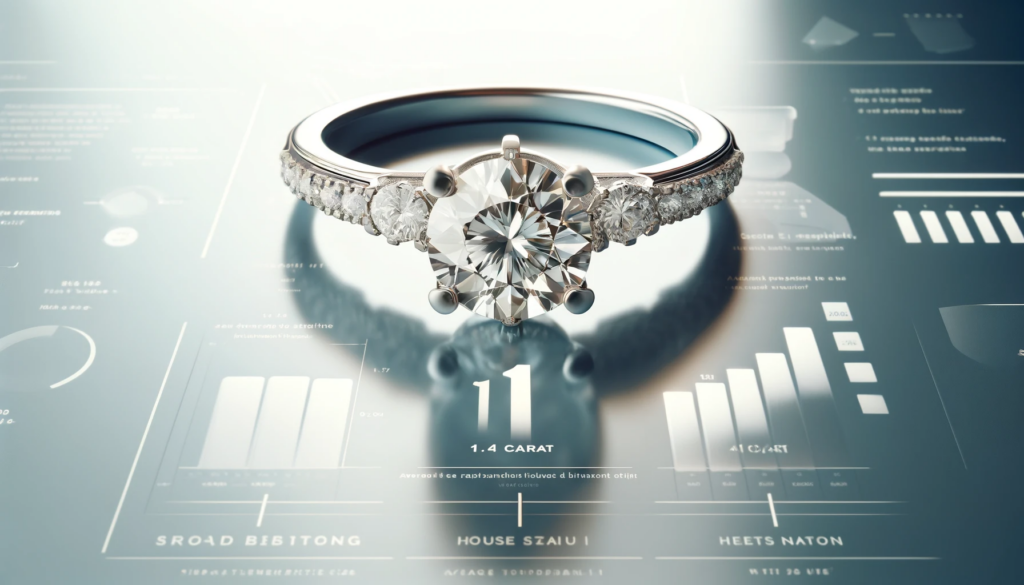
Celebrity Trends
But not every celebrity wants to set an impossibly high bar. In fact, plenty of today’s celebrities – the frontrunners of ‘go big or go home’ when it comes to engagements – forgo the larger carat sizes in favor of something more modest. Mila Kunis and Keira Knightly both said yes to diamonds thought to sit comfortably under the 3 carat mark.
The point is that there is no definitive cut off point between the points of ‘too small’, ‘too big’ and ‘just right’. For some women, even a 2.5 carat diamond will represent a daunting step up from the 1 carat range; for others, the same diamond will fall shy of expectations.
Remember that you’re buying a ring for every day, not just the red carpet, and that diamonds up to around 5 carats tend to prove the easiest to wear in day-to-day life.
Quality vs Carat Weight
It is way better to strike a balance between carat weight and visual quality, than to invest in a massive diamond with poor cut, clarity, color, or proportions.
For starters, you want an Excellent or Very Good cut, as graded by the GIA. Sure, it’d probably be easy for you to find a very attractively priced 3 carat diamond with a Fair or Poor cut – and to talk yourself into thinking cut doesn’t matter that much – but you’d be making a major mistake. Diamond Cut, more than anything else, determines sparkle, which means that your 3 carat dud could prove pretty lifeless on your partner’s finger.
Next we have color and clarity – to features that prove quality isn’t everything. While you’ll want to get a diamond that looks perfect, you don’t need to invest all your money into quality and have nothing left over for carat weight. Read our guides to diamond color and clarity to find out more about the ‘’sweet spot’ between paying for quality, and saving on quality.
In other words, it’s better to have a bigger diamond than a Very, Very Slightly Included 1 (VVS1) diamond. It’s also better to have a smaller diamond than an N color diamond, or a spready diamond.
Understanding the 4Cs
Since there’s no specific size requirement for any diamond engagement ring, the best rule is this: the diamond should be big enough to meet your partner’s expectations, but not so big that visual quality represents the sacrifice.
It’s easy to feel tempted towards the biggest diamonds in your price range. Big diamonds make a massive impact; they are a symbol of wealth and status as much as romance, and there’s no denying the appeal of putting an out-and-out rock on your partner’s finger.
But the belief that size is everything is one that only rookies to the diamond world subscribe to. The most important thing you should be looking at is the 4Cs.
That includes color – do you want a big, yellow diamond or a smaller, clear diamond?
Then there’s clarity – do you want to look down and see flaws sprinkled through the center of your diamond, or visual perfection and a great sparkle?
And, of course, there’s Cut – are you willing to sacrifice sparkle, symmetry, and a high quality polish for sheer size?
1.1 carats represents the ideal middle ground for so many because of the fact that, after taking size and quality into account in (more or less) equal measure, it’s a financial sweet spot and a beautiful, wearable, and classic choice for any bride-to-be.
You can take a look at our full range of GIA graded diamonds here, and utilize our online store to find the perfect diamond for you.
Our Expert Take
It helps to know what the average carat size for an engagement ring is. Without knowing that the majority of shoppers look at diamonds around the 1 carat mark, it’s easy to feel a little lost at sea.
Then again, it’s important you don’t get too hung up on the idea of ‘what everyone else is doing’. Your budget, your partner’s style, and your vision for the end result should all be more important – and have more bearing on your decision – than what the Joneses are up to.
1 carat is a great starting point, but it’s not the end of the world if you have to aim a little lower – and it certainly shouldn’t stop you from opting for a larger size if that’s what you’ve budgeted for.
7 FAQs
- Q: What is the Average Carat Size for an Engagement Ring?
- A: In the United States, the average carat size for an engagement ring typically ranges between 1 to 1.2 carats. However, this can vary based on personal preferences and cultural trends.
- Q: Does a Higher Carat Size Always Mean a Better Ring?
- A: No, a higher carat size does not necessarily mean a better ring. The overall quality and appearance of the diamond are more influenced by a balance of the 4Cs – Carat, Cut, Clarity, and Color.
- Q: How Does the Ring Setting Affect the Appearance of the Diamond?
- A: Certain settings, like a halo setting where smaller diamonds encircle the main stone, can make the central diamond appear larger. The setting can also influence the ring’s ability to be resized in the future.
- Q: Is it Better to Choose a Specific Shape for a Larger Appearance?
- A: Yes, some shapes, like oval or marquise, can appear larger than round or square cuts of the same carat weight due to their elongated structure.
- Q: Can All Engagement Rings Be Easily Resized?
- A: No, not all engagement rings can be easily resized. Rings with full eternity bands, certain intricate designs, or tension settings present more challenges in resizing.
- Q: Are There Benefits to Choosing a Diamond Slightly Below Popular Carat Weights?
- A: Yes, opting for a diamond just below popular carat weights (like 0.9 instead of 1 carat) can offer a better value. The size difference is often negligible, but the cost savings can be significant.
- Q: How Important is it to Consider Long-Term Style vs. Current Trends?
- A: It’s very important to consider long-term style preferences over current trends. An engagement ring is a lifelong commitment, so choosing a timeless design that aligns with the wearer’s personal style ensures lasting satisfaction.
Discover your ideal engagement ring with Jeweler AI. Harness the power of AI to find the perfect match in style, quality, and carat size!
Here are more specific diamond prices topics to browse:
- Melee Diamonds: The Perfect Accents to Enhance the Center Stone
- Small Diamond Engagement Rings: Big Sparkle Comes In Little Packages
- 0.25 Carat Diamond: Tiny Treasure or Just Too Small?
- The True Value of a 0.5 Carat Diamond Ring Revealed
- 0.7, 0.8, 0.9 Carat Diamond Showdown: Which One Wins?
- Price Alert: Don’t Overpay for a 1 Carat Diamond Ring!
- What You Should Pay for a 1.5 Carat Diamond Ring?
- Price Alert: How Much Should You Pay for a 2 Carat Diamond Ring?
- How Much Does a 2.5 Carat Diamond Really Cost?
- The Real Cost of a 3 Carat Diamond Ring
- Industry Secret: How Much Does a 4-Carat Diamond Ring Actually Cost?
- How Much is Too Much? The True Cost of 5 Carat Diamond Ring!
- 6 Carat Diamond Rings: Pricing Breakdown & Value Tips
- 7 Carat Diamond Rings: Affordable Luxury Prices Revealed
- 8 Carat Diamond Rings: Price Comparison & Savings Tips
- 9 Carat Diamond Rings: Detailed Pricing Guide & Best Deals
- 10-13 Carat Diamonds: The Ultimate Symbol of Luxury!
- 15 Carat Diamonds: Why Celebrities Love Them!
- Unveiling the Majesty: The Secrets Behind the 20 Carat Diamond Ring!
- Decoding the Grandeur: The Journey to Choosing a 25 Carat Diamond Ring
- Understanding What Is CTTW Diamond In Engagement Ring
- The Truth About Why Diamonds Are So Expensive and Incredibly Valuable
FOLLOW-UP GUIDE SERIES

